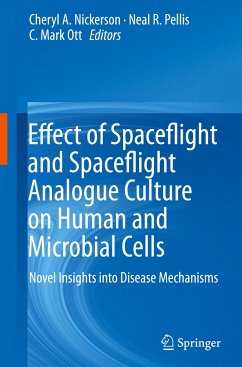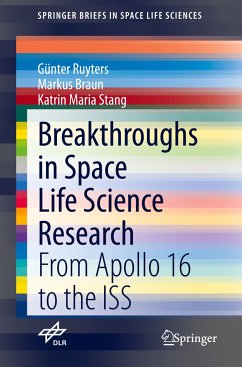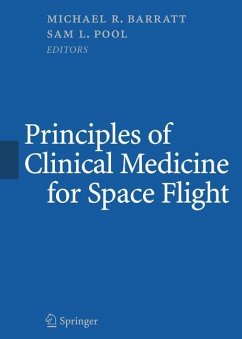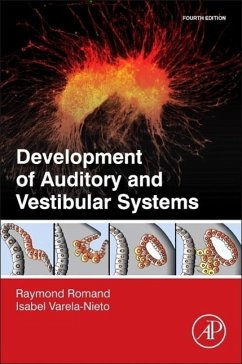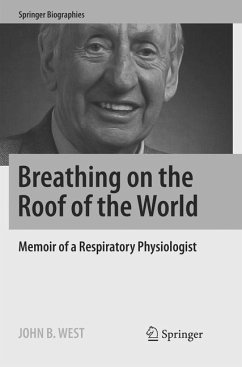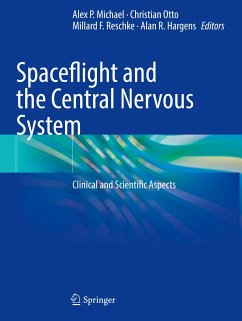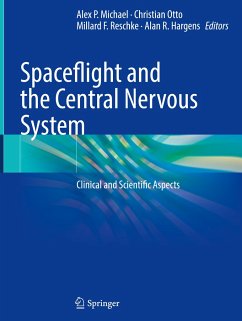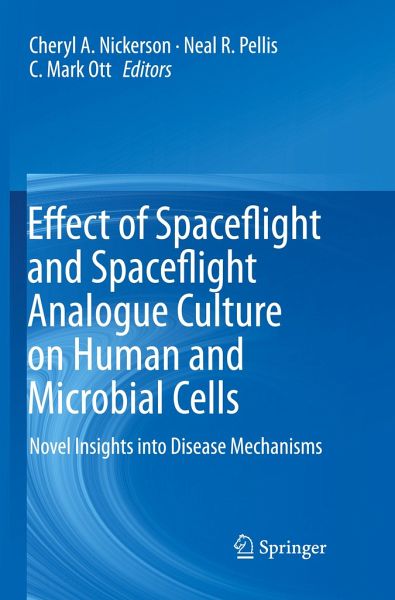
Effect of Spaceflight and Spaceflight Analogue Culture on Human and Microbial Cells
Novel Insights into Disease Mechanisms
Herausgegeben: Nickerson, Cheryl A.; Pellis, Neal R.; Ott, C. Mark
Versandkostenfrei!
Versandfertig in 6-10 Tagen
113,99 €
inkl. MwSt.

PAYBACK Punkte
57 °P sammeln!
Many breakthroughs in biological research and translational healthcare advancements have been achieved by studying the response of biological systems to extreme environments. The spaceflight platform provides a unique environment where researchers can explore fundamental questions into cellular and molecular response mechanisms to unveil novel insight into human health and disease. Since the physical force of gravity has shaped the architecture of all biological systems on our planet, spaceflight provides the opportunity to see life in a new adaptational mode - in response to reduced gravity. ...
Many breakthroughs in biological research and translational healthcare advancements have been achieved by studying the response of biological systems to extreme environments. The spaceflight platform provides a unique environment where researchers can explore fundamental questions into cellular and molecular response mechanisms to unveil novel insight into human health and disease. Since the physical force of gravity has shaped the architecture of all biological systems on our planet, spaceflight provides the opportunity to see life in a new adaptational mode - in response to reduced gravity. This enables investigations into the effects of the microgravity environment and associated changes in mechanical forces on mammalian cells/tissues and microbial pathogens, to bring novel insight into disease mechanisms, which are not discernable using conventional experimental approaches.
Research using spaceflight platforms represents a paradigm shift in howwe observe life processes and is on the leading edge of research discoveries into cellular and molecular mechanisms of health and disease. By incorporating the views of leading authors, this book highlights landmark discoveries and advances in mammalian cellular and microbiology research in both true spaceflight and ground-based spaceflight analogue environments for scientists and students alike who are interested in the influence of physical forces on mammalian and microbial cells, how this impacts transition between normal homeostasis and disease, and basic mechanisms of adaptation to low gravity environments. To provide a thorough understanding of this research, this book covers a range of topics including:
(i) description the physical forces interacting with cells in microgravity and microgravity analogue environments,
(ii) how alterations in these cellular forces impact human physiology, specifically immune function,
(iii) useof these environments to develop organotypic three-dimensional (3-D) tissue culture models as predictive human surrogates for organogenesis and disease research, and
(iv) microbial pathogen responses to culture in these environments, focusing on infectious disease
Collectively, this information reflects a critical step in preparation for long-duration human space exploration, advances our knowledge of basic biological processes and mechanisms important to understand normal function and disease, and may lead to new strategies for treatment and prevention.
Research using spaceflight platforms represents a paradigm shift in howwe observe life processes and is on the leading edge of research discoveries into cellular and molecular mechanisms of health and disease. By incorporating the views of leading authors, this book highlights landmark discoveries and advances in mammalian cellular and microbiology research in both true spaceflight and ground-based spaceflight analogue environments for scientists and students alike who are interested in the influence of physical forces on mammalian and microbial cells, how this impacts transition between normal homeostasis and disease, and basic mechanisms of adaptation to low gravity environments. To provide a thorough understanding of this research, this book covers a range of topics including:
(i) description the physical forces interacting with cells in microgravity and microgravity analogue environments,
(ii) how alterations in these cellular forces impact human physiology, specifically immune function,
(iii) useof these environments to develop organotypic three-dimensional (3-D) tissue culture models as predictive human surrogates for organogenesis and disease research, and
(iv) microbial pathogen responses to culture in these environments, focusing on infectious disease
Collectively, this information reflects a critical step in preparation for long-duration human space exploration, advances our knowledge of basic biological processes and mechanisms important to understand normal function and disease, and may lead to new strategies for treatment and prevention.



